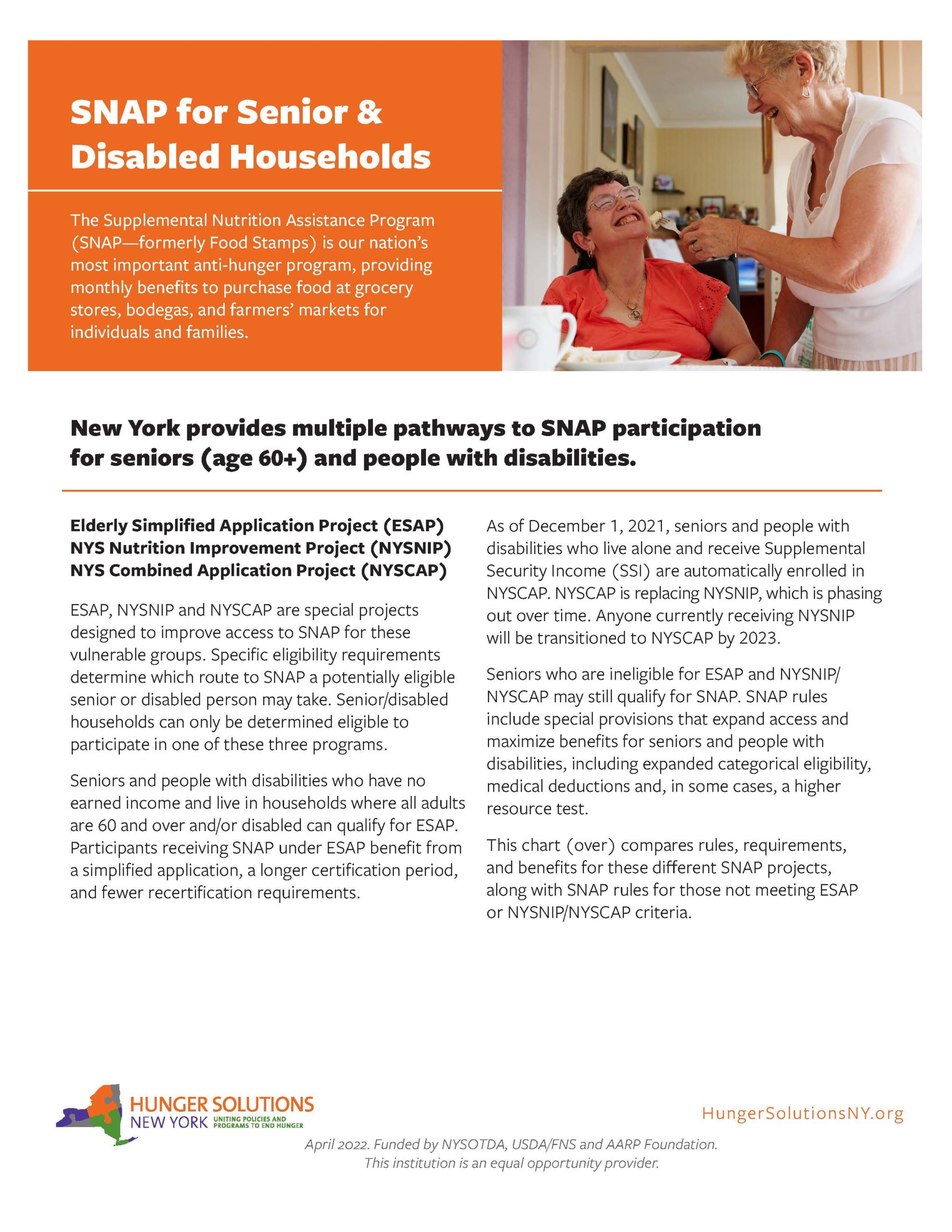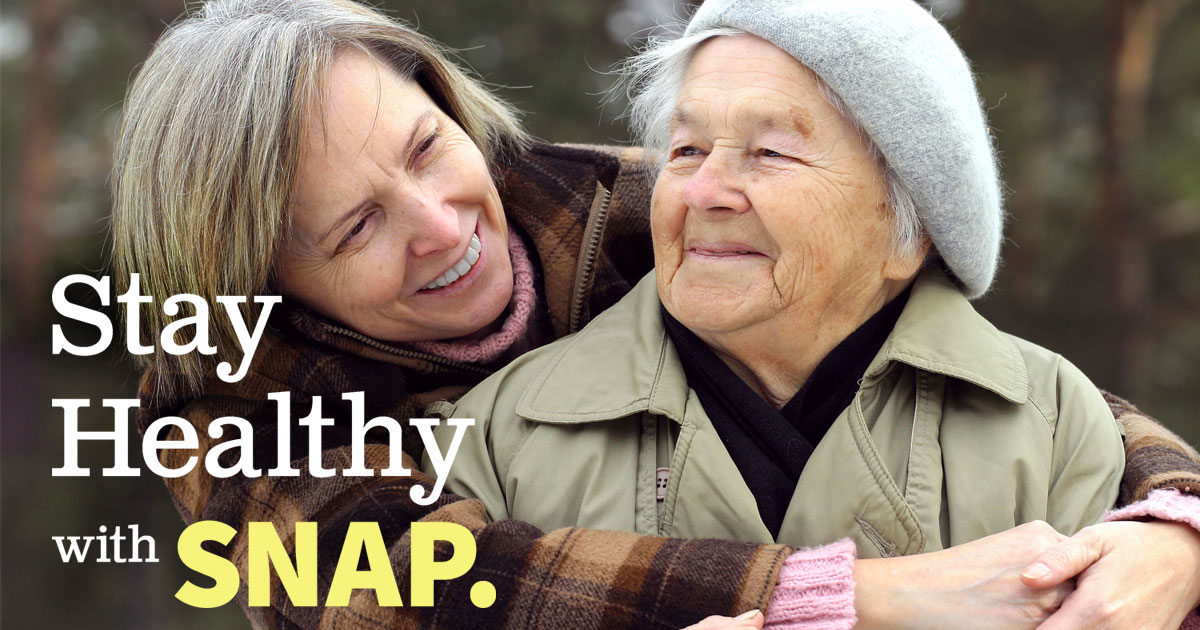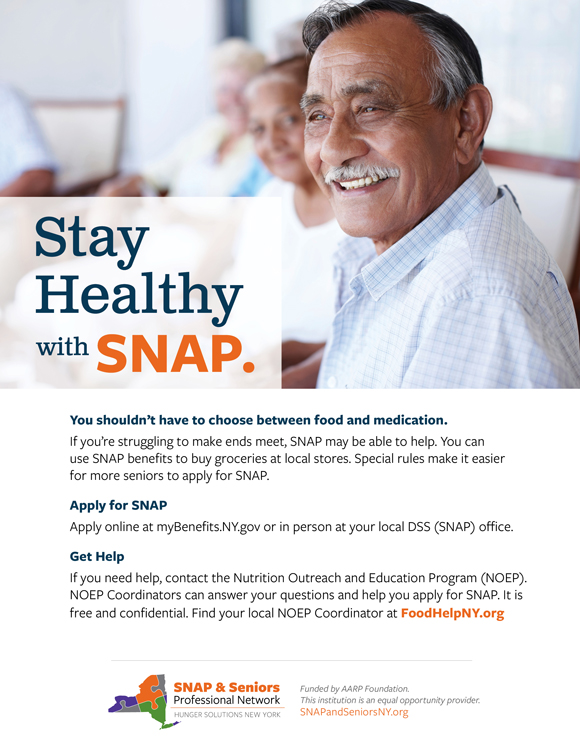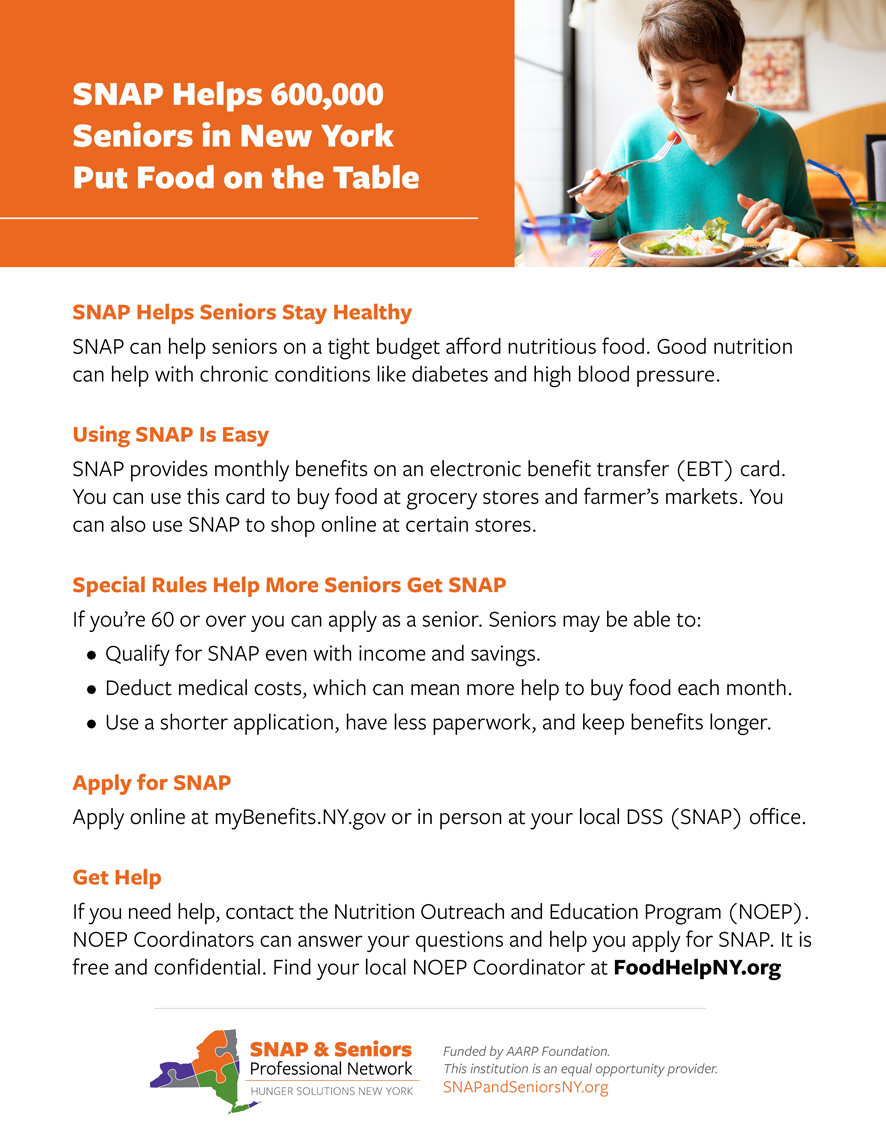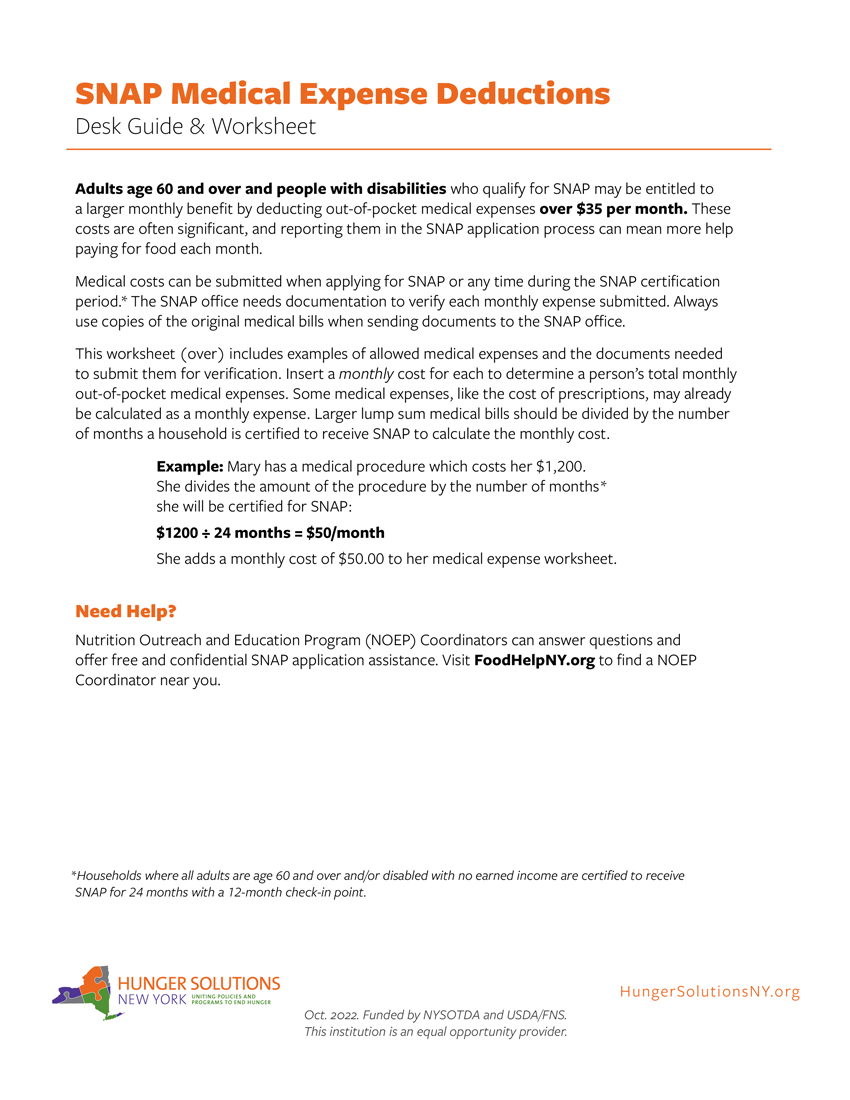SNAP & Seniors
Nearly 200,000 older New Yorkers may be eligible for but not receiving SNAP benefits.
Food insecurity among seniors has increased 38% since 2001. By 2050, an estimated 8 million seniors will struggle to put food on the table. SNAP helps older adults stay healthy by improving their nutrition and food security, which can lead to better medication adherence, reduced hospital and nursing home admissions, and lower overall healthcare costs.
SNAP & Seniors Facts
60+
Age that someone can apply for SNAP as a senior
676,000
seniors in NYS relied on SNAP to put food on their tables in 2019.
194,983
Eligible NYS seniors who are not receiving SNAP benefits. (estimated, 2018)
9.7%
of senior households face food insecurity in NYS. (2019)
200%
Seniors get expanded SNAP eligibility with a gross income limit of 200% of the federal poverty level.
SNAP Rules for Seniors
SNAP has special rules (see below) for seniors that expand eligibility, simplify the application process, and increase the benefit amount. Visit our SNAP Prescreening Guide for more information about SNAP eligibility.
Expanded Categorical Eligibility
Households with seniors and/or people with disabilities with a gross income under 200% of the federal poverty limit do not need to meet resource limits or pass the net income test because they are categorically eligible. Those with income over 200% of the federal poverty limit may still be eligible for SNAP but only if their resources are below the resource limit and they pass the net income test.
Separate Household Status for those who are elderly and disabled
If a person lives with others and is both elderly and disabled, they may be able to establish separate household status for SNAP purposes if the income of their “housemates” does not exceed 165% of the federal poverty limit.
Medical Deductions
Seniors who qualify for SNAP may be entitled to a larger monthly benefit by deducting out-of-pocket medical expenses over $35. By reporting these expenses in the SNAP application process, seniors can get even more help paying for food each month. See our SNAP Medical Deduction Worksheet.
Telephone Interviews
Households comprised of all seniors and/or adults with disabilities and no earned income are granted telephone interviews automatically.
Authorized Representatives
SNAP applicants can appoint an “authorized representative” who can apply on their behalf, attend the interview, and the use the EBT card to make purchases, if approved. This option is available to all SNAP applicants, but it is most useful to the elderly and people with disabilities.
Seniors Farmers’ Market Nutrition Program
The Seniors Farmers’ Market Nutrition Program is designed to provide low-income seniors with access to locally grown fruits, vegetables, honey and herbs. Learn more here: fns.usda.gov/sfmnp/senior-farmers-market-nutrition-program
How to Apply for SNAP
Applicants can apply online at myBenefits or in person at a local DSS or HRA office.
Simplified SNAP-Only Application for Seniors and People with Disabilities
NYS introduced this simplified application as part of a larger effort, known as the Elderly Simplified Application Project (ESAP), to simplify the SNAP application/recertification process for these vulnerable populations. Learn more
Need help? Our Nutrition Outreach & Education Program (NOEP) Coordinators help people apply for SNAP. Located across NYS, we offer:
- Application assistance, including phone interviews and online application submission
- Assistance with submitting documentation.
- Assistance with medical deductions. Medical deductions can dramatically affect someone’s potential eligibility for SNAP
Programs to Help Seniors Access SNAP
New York State provides multiple pathways to SNAP participation for seniors (age 60+) and people with disabilities. The Elderly Simplified Application Project (ESAP) and the NYS Combined Application Project (NYSCAP) are special projects designed to improve access to SNAP for these vulnerable groups. Specific eligibility requirements determine which route to SNAP a potentially eligible senior or disabled person may take. Senior/disabled households can only be determined eligible to participate in one of these three programs.
ESAP
Seniors and people with disabilities who have no earned income and live in households where all adults are 60 and over and/or disabled can qualify for ESAP. Participants receiving SNAP under ESAP benefit from a simplified application, a longer certification period, and fewer recertification requirements.
NYSCAP
NYSCAP automatically enrolls seniors and people with disabilities who live alone and receive Supplemental Security Income (SSI) into SNAP.
Seniors who are ineligible for ESAP and NYSCAP may still qualify for SNAP. SNAP rules include special provisions that expand access and maximize benefits for seniors and people with disabilities, including expanded categorical eligibility, medical deductions and, in some cases, a higher resource test.
Compare the Programs:
|
|
NYSCAP | SNAP | |
| Who can participate | All adults in household must be seniors or disabled with no earned income | Seniors or disabled who receive SSI and live alone | Seniors or disabled who are ineligible for ESAP or NYSCAP—may have earned income |
| Application & enrollment | Apply using the Simplified SNAP-only Application for Seniors and People with Disabilities (LDSS-5166), myBenefits, or AccessHRA | No application—participants are enrolled automatically | Apply using myBenefits, or AccessHRA, or the SNAP-only Application (LDSS-4826) |
| Interview required? | Yes | No | Yes |
| Applicant screened for expedited service? | Yes | No | Yes |
| Recertification |
|
|
|
| Benefits | Individualized budget | Individualized budget
Participants must redeem benefits within 90 days of auto-enrollment |
Individualized budget
Senior/disabled households can maximize benefits with categorical eligibility, medical deductions and a higher resource test |
| Documentation |
Computer matches for:
Self-declaration for:
Participants must submit:
|
Participants must submit the NYSCAP SNAP Case Information Collection Sheet (LDSS-4841) to maximize benefits | See our SNAP Prescreening Guide for detailed information on SNAP documentation |
Resources
Sample senior hunger awareness social media messages and graphics
Download for sample messages and images to post on your social media channels
Webinar: Lunch & Learn: Elderly Simplified Application Project
Webinar: How to Maximize SNAP for Seniors
Latest SNAP & Seniors News
Toolkit: SNAP October 1, 2024 Eligibility/Budgeting Changes
Shop Online Using SNAP
New Research Shows SNAP Enrollment Reduces Hospital Visits and Healthcare Costs for Seniors Enrolled in Medicare and Medicaid
Stay up to date
Get the latest news, action alerts, press releases, and hunger research delivered to your inbox.

